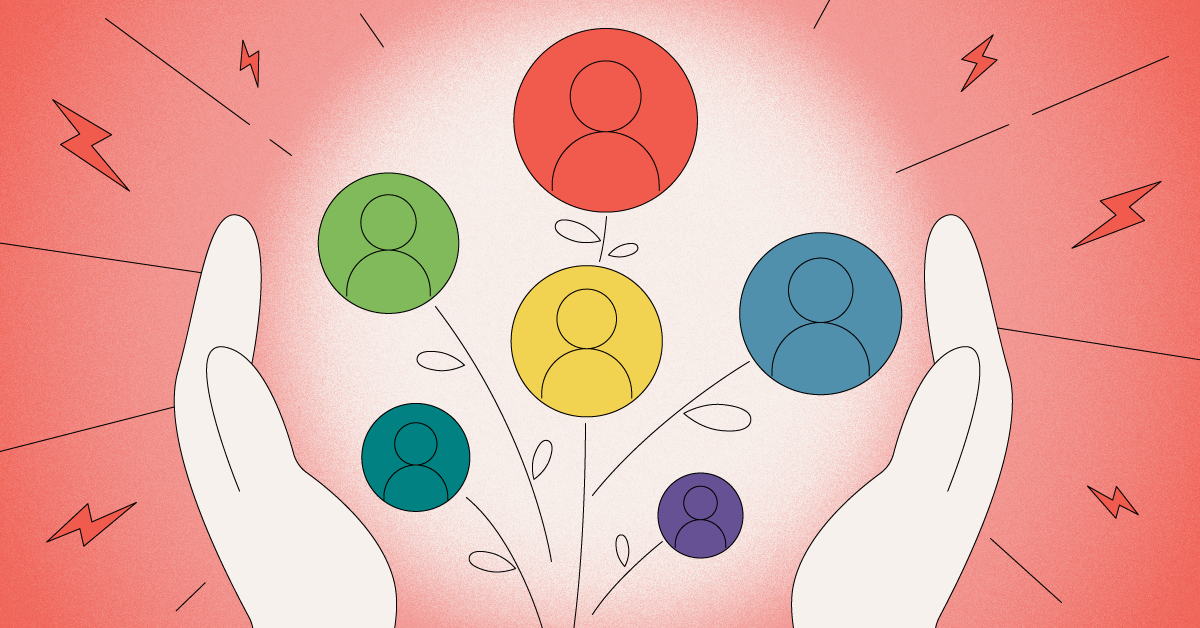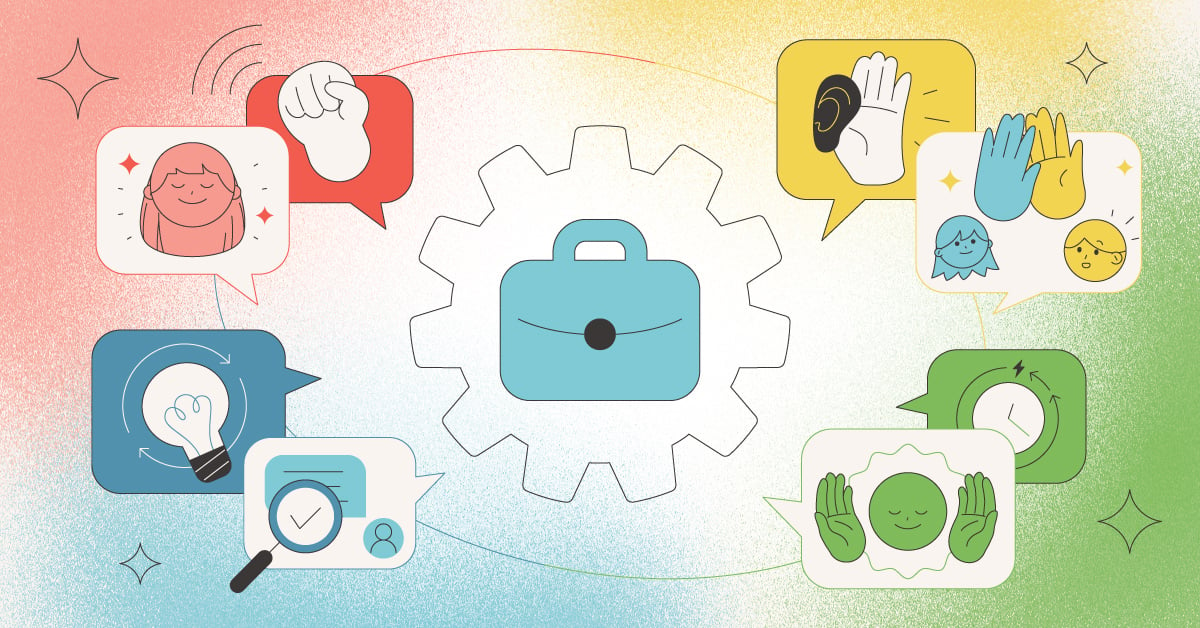
Looking holistically at talent is crucial for recognizing the full range of an individual's abilities. Enhancing adaptability, fostering diversity and psychological safety, and creating more inclusive environments whereby everybody has the opportunity to thrive shows that the uniqueness of each individual is valued. Not to mention, it harnesses their potential for the benefit of the individual and, ultimately, the organization.
TTI Success Insights was the first company in the world to computerize the DISC assessment, and with a 40-year heritage in the assessment world, most people know about the TTI Success Insights DISC assessment. In fact, it’s estimated that 75% of the Fortune 500 companies use DISC. There’s good reason for this though, DISC is a powerful yet simple framework used to describe the ways that people communicate.
Understanding yourself and your preferred communication style is the building block to self-awareness, and self-awareness underpins most development programs around the world. This assessment is a great example of a tool that organizations can implement to look at talent holistically. However, an even better strategy is to consider combining at least 3 powerful sciences together.
The fusion of three of TTI Success Insights’ sciences, let’s say DISC, Driving Forces, and EQ creates the TriMetrix® EQ assessment. This tool is particularly impactful for executive coaching and leadership development. When combining these sciences into practice, it’s helpful to think about their relationship as three areas: Trigger, Response, and Impact.
TRIGGER – Driving Forces
Driving Forces show us our unique ‘WHY’ or personal motivators and values. A Driving Force is a cluster of beliefs with similar underlying patterns or ideas that we believe to be fundamentally important and unquestionably true. Our primary Driving Forces determine what gives us joy, happiness, energy, and purpose. Similarly, when our primary Driving Forces are ignored or contradicted, this can cause great dissatisfaction and frustration. You could think of your Driving Forces as your ‘trigger.’
During communication with a team member, if you have a conflict that contradicts your driving forces or interferes with a personal value, you are extremely likely to find that interaction difficult and frustrating. It’s going to be more frustrating than behavioral friction, for example, because this situation is impacting something deep-rooted within you, part of your values system, and therefore very important to you as an individual.
So, if you’ve ever wondered why certain topics of conversation or a specific situation seemed to challenge (trigger) you more than others, Driving Forces is more than likely the answer.
This, of course, doesn’t just relate to conflict between people. One of the most useful insights you can gain from understanding a person’s Driving Forces as a leader is whether a person’s primary Driving Forces align with a job and the organization’s culture. If there is a mismatch between an individual’s Driving Forces and the organization’s culture, then this is going to cause high levels of disengagement and, therefore be a TRIGGER for the individual. On the flip side, finding harmony between the organization’s culture and the individual’s Driving Forces leads to engagement, energy, and a joyful experience.
RESPONSE – Behaviours/DISC
The response to triggering (positive and negative) situations, in general, depends on
behavioral styles. The DISC profile tells us:
- How we respond to problems and challenges (D)
- How we respond to people and contact (I)
- How we respond to pace & consistency (S)
- How we respond to procedures & constraints (C).
In responses, individuals can be reflective or direct, reserved or outgoing, dynamic or steady, or pioneering or precise. You can observe a DISC profile to gain awareness of natural and adapted behaviors.
IMPACT – Emotional Quotient
How much a triggering situation impacts an individual is based on Emotional Quotient, a measurement of Emotional Intelligence. People with high levels of emotional intelligence are:
- Aware of their emotional states and the impact they can have on other people
- Aware of others’ emotional states and the impact they have
- Able to regulate and control their emotional responses and take action to manage the impact of their own and others’ emotional states.
If EQ is well developed, the triggering situations, communications, and environments are less likely to have an impact. Conversely, if a person’s EQ is not well developed, the triggers are likely to have much more of a personal impact on them and the people around them. Research suggests that people who have developed and applied the principles of emotional intelligence tend to enjoy greater mental and physical health, increased job performance, and more productive relationships.
Having an understanding of all three layers becomes the ultimate tool to help people understand
others in 3D, improving leadership capabilities, productivity, engagement, and overall success.
If you’re curious how leaders in this space use the power of multi-science with TTI Success Insights, click below to access our global panel as they discuss what goes into making an international talent development strategy.
Workplace stress is a pressing concern that negatively affects the well-being of employees and the success of organizations, so it’s crucial for HR professionals to understand the relationship between stress and emotional intelligence at an individual level.
That knowledge will allow them to discover how to identify and address stress at a team and organizational level.
The Impact of Workplace Stress
Workplace stress is unique. It’s different from challenges that energize you psychologically or physically, as well as the kind of stress that motivates you to learn and problem-solve, which is often referred to as good stress.
Instead, workplace stress arises when job requirements do not align with the employee's capabilities, resources, or needs, resulting in negative and frequently harmful physical and emotional reactions (bad stress). This form of stress can adversely affect individuals, teams, and organizations.
Gallup’s latest State of the Global Workplace report shows that in 2022, stress among the world’s workforce reached an all-time high, with 44% of employees stating they experienced a lot of stress the previous day. In the U.S. and Canada, that number is higher, with 50% of employees experiencing daily stress that can be categorized as bad stress.
The 7 Workplace Stressors
Recognition is the first step towards change, and assessing workplace stress is crucial for effective management. The TTI SI Stress Quotient assessment tool analyzes stress across seven dimensions, allowing HR professionals to pinpoint areas of concern. This assessment provides a helpful framework for understanding workplace stress and includes:
Workplace Demands: Stress arises from excessive demand when workloads overwhelm, or skills don't match the position.
Effort and Reward Balance: When high levels of output and effort are met with minimal rewards – whether that be compensation, a promotion, or simple recognition for a job well done – an individual’s stress can skyrocket. Without a balance between effort and reward, an employee can feel disconnected, unmotivated, and even angry.
Control: Feeling powerless is a universal cause of job stress. Lack of control comes from high responsibility paired with low authority, not being heard, not being involved, and others not understanding your work.
Organizational Change: Organizational changes – from management restructuring to new policies and procedures – impact individuals differently. For some, it brings apprehension, insecurity, and confusion, all of which can raise stress levels when changes are not properly communicated or understood
Management Issues: Reasonable directives from your boss should be expected, but enormous pressure or challenges, to the point of hindering your workload, are unreasonable and cause stress to increase.
Social Support: An unsupportive social environment can cause workplace stress. Managers who don’t provide clear and consistent information and co-workers who fail to assist one another leave team members feeling unengaged and unproductive.
Job Security: Fearing for your job is extremely stressful. However, stress can also be caused by a lack of advancement, being promoted too slowly, or being promoted too quickly to be successful in the job.
To identify which of these stressors may be prevalent in your organization, ask yourself or your people to reflect on these questions.
- Workplace Demands: Is my job designed well enough for what I’m expected to do?
- Effort and Reward Balance: Is my effort and the reward I receive in balance?
- Control: Do I have autonomy in my role?
- Organizational Change: How much organizational change is causing stress?
- Management Issues: Is my manager equipped to handle the increasing scale of the work?
- Social Support: Am I receiving support from others around me?
- Job Security: Do I feel secure about my job?
Individual Stress: The 4 A’s of Conscious Leadership
Leaders who actively manage stress within their organization create a positive, productive work environment. This benefits both their team and the organization as a whole. When leadership is involved, it sends a clear message to staff that their well-being is a top priority, leading to increased engagement and a more positive work culture. Leaders must show by example and manage their well-being first before they can help others. Actions from leadership trickle down and set the tone for the whole organization.
That’s why helping leaders identify and address individual stressors is vital to the organization as a whole. Making changes is no easy task and takes a large amount of emotional intelligence. We take a conscious leadership approach towards creating change, reducing stress, and becoming more effective leaders. At ORCA, we call this the 4A’s of Conscious Leadership Framework.
Team and Organizational Stress: Assessments and Programs
Identifying and addressing stressors doesn’t stop at the individual level; stressors must be addressed within teams and the entire organization. Assessments can play a vital role in providing data and actionable steps to make an impact. The TTI SI Stress Quotient Assessment can also be utilized to diagnose workplace stressors within teams or in the organization as a whole. Organizations can:
- Determine how stress is impacting productivity
- See if work demands are spurring discontent
- Uncover unresolved issues across teams
- Have the prompts to address stress head-on
Once stressors are identified, individuals, teams, and organizations can make changes. This can happen through workshops or comprehensive well-being and leadership development programs. Companies that proactively address and effectively manage workplace stress are seen as more attractive places to work and will help retain and attract great talent.
A Workplace Win-Win
In today's rapidly changing world, workplace stress is a significant challenge that leaders and HR professionals must address. By utilizing assessments, HR professionals can diagnose stress, identify its causes, and take targeted actions to create a healthier and more productive work environment.
Managing workplace stress not only benefits individual employees but also enhances organizational success and competitiveness in the market.




